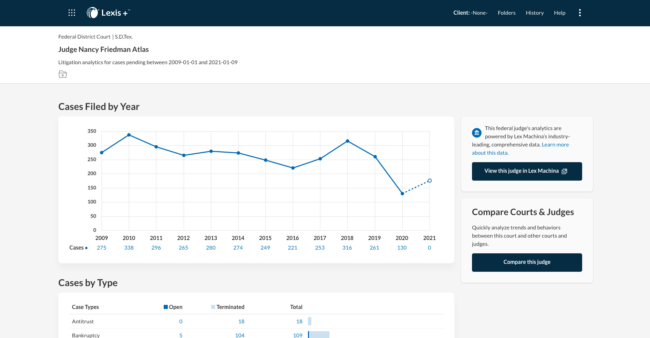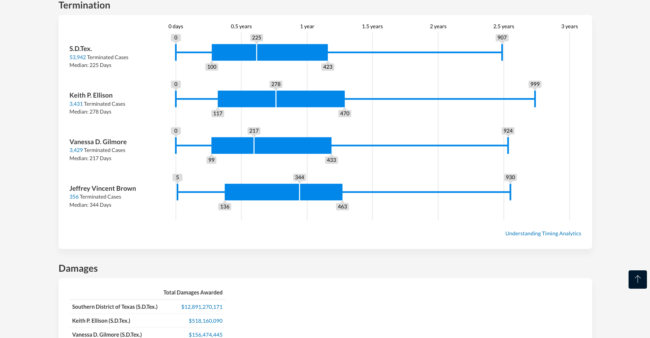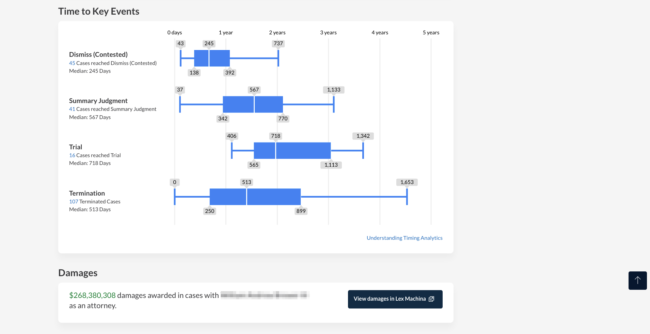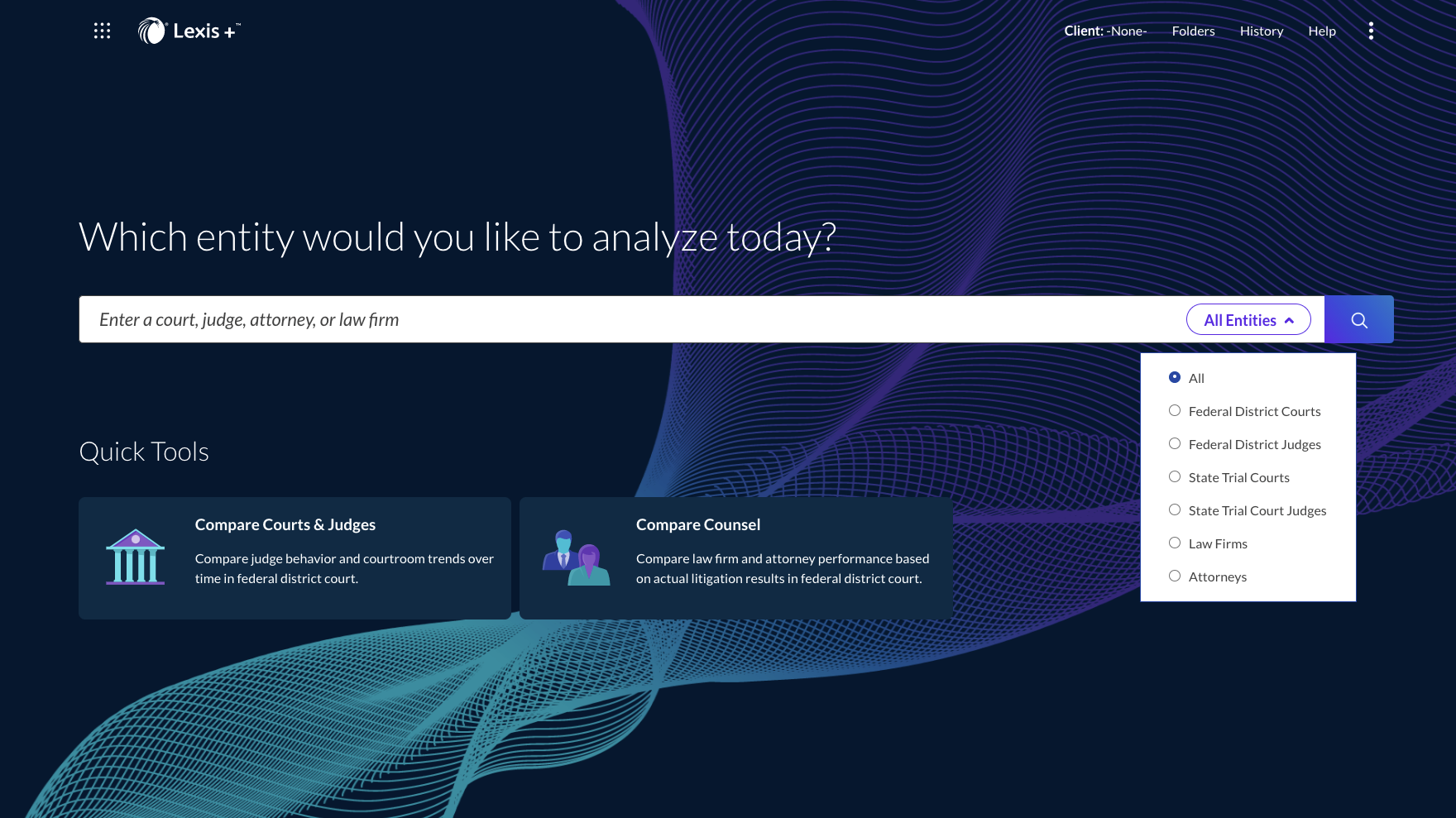LexisNexis has enhanced its Lexis+ premium legal research platform with the addition of litigation analytics, which provide data-driven insights into judges, courts, attorneys and law firms, in both federal and state courts.
LexisNexis officially launched Lexis+ last September, positioning it as a higher-end alternative to its existing Lexis Advance research platform (now renamed as simply Lexis) for users who want an all-in-one, end-to-end platform that incorporates the company’s latest powerhouse technologies.
At launch, it was organized around three core “pillars” of research: Legal Research, incorporating the company’s most-advanced research tools; Practical Guidance, a collection of practice-specific forms, clauses, checklists, articles and practice notes; and Brief Analysis, LexisNexis’s version of a line of products from other companies that analyze briefs for missing relevant cases.
Litigation Analytics now becomes the fourth pillar of Lexis+, bringing sophisticated analytics to all users of the Lexis+ platform and incorporating it within the legal research and Practical Guidance workflows.
This new component of Lexis+ is based on the litigation analytics technology developed by the trailblazing legal analytics company Lex Machina, which LexisNexis acquired in 2015 and has continued to develop over the years, adding new practice areas and jurisdictions and integrating it into other products.
It also incorporates docket coverage from CourtLink, another LexisNexis brand, in order to provide analytics for the many state courts that Lex Machina does not yet cover.

Analytics for federal judges include caseloads and case types.
While Litigation Analytics in Lexis+ lacks the full depth of Lex Machina’s analytics, its use of CourtLink provides a greater breadth of basic analytics, especially for state courts.
Analytics in the Workflow
Last week, I was given a preview demonstration of the new Litigation Analytics by Karl Harris, CEO of Lex Machina, and Wade Malone, product manager at Lex Machina.
The key types of analytics available in Lexis+ are:
- Judge and court analytics. Explore data regarding federal district and state courts and judges.
- Attorney and law firm analytics. See data on attorneys and law firms in federal district and state courts.
- Courts & Judges Comparator Quick Tool. A tool to easily compare judge behavior and courtroom trends over time in federal district court.
- Counsel Comparator Quick Tool. A tool to compare law firm and attorney performance based on actual results in federal district courts.
Using court and judge analytics, you can see data such as how many cases are pending in a court or before a judge, how many cases of particular types are pending, how long that court or judge averages to key trial events, damages typically awarded at trial, and specific cases pending before a court or judge.

Compare judges’ time to reach key events and total damages awarded.
Using the Comparator Quick Tool, a user can compare federal district judges, to see data on their comparative caseloads, case types, and time to key events.

For attorneys and law firms, Litigation Analytics shows federal court data such as their cases by type, cases by year, the top courts in which they appear, their top clients (shown for firms only, not by individual attorneys), their roles as plaintiffs or defendants, and their times to key events.
With regard to state court data for attorneys and law firms, what you see depends on whether the court is covered by Lex Machina. These tend to be mostly the largest state courts in the country, such as Los Angeles County, Houston and New York.
For courts not covered by Lex Machina, less data is available and therefore fewer analytics are available. The data is drawn from docket sheets in CourtLink, which often have less information and, in some cases, may not even identify the law firm. However, Lex Machina is constantly expanding its state court coverage, and any courts added to Lex Machina will be reflected in Lexis+.
Although Lexis+ does not provide the full analytics available in Lex Machina, it links to Lex Machina, so that those who are Lex Machina subscribers will be able to move directly from research in Lexis+ to drilling down into deeper data within Lex Machina.
Bottom Line
I consider litigation analytics to be one of the most important technologies to have gained traction in recent years. Writing about analytics on Above the Law, I titled the post, This Tech Can Turn the Tables in Litigation. In my year-end summary of the most important legal tech developments of 2018, my top item was “analytics become essential,” noting, “We could be nearing a point where it would be malpractice for a lawyer not to use analytics.”
Harris, the Lex Machina CEO, told me during our demonstration that what most excites him about this release is the fact that it integrates litigation analytics directly into the legal research workflow; that by leveraging the Lex Machina technology, it is able to provide features not available in other platforms; and that by leveraging CourtLink, it is able to provide the broadest analytics coverage of any platform.
What you get in Lexis+ is less than the full array of analytics available in Lex Machina, meaning that if you are serious about using analytics in your litigation practice, you will still need that additional subscription. At the same time, this is more than merely a starter set, and it is made better by the use of CourtLink data to expand its coverage to more state courts, which no analytics tool covers in a truly comprehensive way.
The bottom line is that Litigation Analytics adds another set of useful tools to Lexis+, making it that much more useful as a legal research platform. As I said in my earlier review, the biggest question about whether to move to Lexis+ from Lexis or another platform is price, which LexisNexis does not reveal to the public.
 Robert Ambrogi Blog
Robert Ambrogi Blog